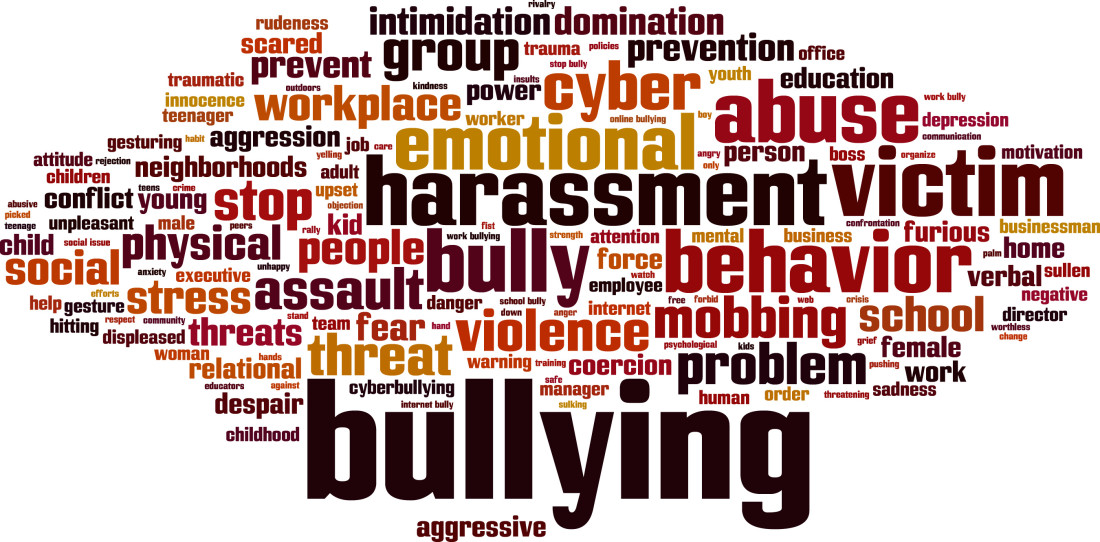Conflict at Work: Is it Harassment or is it Bullying?
 Employers have known for a long time the legal implications of harassment in the workplace. And, while bullying gets considerable attention in schools, it is only now starting to gain attention in the workplace. But employers must be aware that ignoring bullying in the workplace may also expose them to significant legal liability.
Employers have known for a long time the legal implications of harassment in the workplace. And, while bullying gets considerable attention in schools, it is only now starting to gain attention in the workplace. But employers must be aware that ignoring bullying in the workplace may also expose them to significant legal liability.
Whether you have experienced it firsthand or have witnessed it, workplace bullying is on the rise. Studies have shown that nearly half of American workers have been affected by workplace bullying in one form or another. While the terms are often used interchangeably when talking about harmful behavior, it is important to examine exactly what constitutes bullying and harassment in the workplace.
Bullying
Bullying is defined as unwanted, recurring aggressiveness that causes psychological and/or physical harm, while at the same time creating a psychological power imbalance between the bully and their targets.
There are three concepts that are central to defining bullying in the workplace:
1. It must be repeated.
- Bullying does not refer to rudeness or someone simply having a bad day; research indicates that bullying happens at least once a week for a period of six months and on average, can last for a period of two to five years.
2. It causes harm, physical and psychological, to targets as well as individuals who witness it.
3. It is all about psychological power.
- Gradually and as long as the target says or does nothing, the bullying will continue, more frequently and aggressively.
- Eventually an understanding is reached that the bully has power and the target does not.
- Ultimately, the target is left feeling helpless from the abuse.
Bullying in the workplace falls into three categories:
1. Aggressive Communication
- This includes insulting remarks, shouting, angry outbursts, finger pointing, invading someone else’s personal space and harsh emails or texts.
2. Humiliation
- This includes ridiculing or teasing, spreading rumors or office gossip, ignoring peers, playing inappropriate jokes and taunting over social media/internet.
3. Manipulation of Work
- Behavior such as removing tasks that are imperative to job performance, giving unmanageable workloads or impossible deadlines, changing tasks unnecessarily and purposely withholding important information.
Harassment
Harassment is unwelcomed conduct that is intimidating, hostile or abusive, interferes with an employee’s ability to work or is a condition of continued employment. Harassment must be based on a protected characteristic. Examples include:
- Using racially derogatory words
- Telling inappropriate jokes
- Offensive remarks regarding skin color or age
- Expressing negative stereotypes
Sexual harassment is defined as unwelcome sexual advances, requests for sexual favors and other verbal or physical advances of a sexual nature.
Similarities and Differences between Harassment and Bullying.
Bullying and harassment share some common characteristics. They are both about:
- Power and control
- Actions that hurt another person’s physical or emotional state
- An imbalance of power
- The target having difficulty stopping the negative behavior
However, to be actionable under federal or state employment laws, harassment must be based on an individual’s race, color, religion, sex, age, disability, national origins or other characteristic protected under law.
Legal Significance
While discrimination and harassment have long been found to be illegal, bullying is generally not yet prohibited under federal and state employment laws. However, bullying that is not properly addressed could raise other legal issues. Under MIOSHA, employers have a duty to provide employees with a safe and healthful work environment free of recognized hazards.
Employers who fail to do so could be subjected to potential fines if unchecked bullying leads to a workplace injury. Similarly, employees who are injured as a result of bullying may be entitled to workers’ disability compensation for lost work time. Worse, unchecked bullying could lead to workplace violence and shootings, which could result in liability for breach of the duty of care, negligent hire, negligent retention, or other tort claims. In a recent case, violation of the duty of care resulted in a jury verdict against the employer in excess of $7,000,000.00.
Proactive Steps to Protect the Company and its Employees
To guard against potential incidents of workplace violence, employers should implement a policy for screening all applicants and employees for criminal behavior. Ensure that background checks on applicants comply with the Fair Credit Reporting Act (FCRA) and pre-employment inquiries comply with the Internet Privacy Protection Act (IPPA) and pre-employment regulations and guidelines issued by the Equal Employment Opportunity Commission (EEOC) and Michigan’s Department of Civil Rights. Employers should also review and update their employee handbook policies concerning equal employment opportunity, harassment and weapons in the workplace.
If you have questions about potential harassment or bullying conflicts in the workplace, visit the Foster Swift website (www.fosterswift.com) to review the Workplace Violence PowerPoint presentation, or contact a Foster Swift labor and employment attorney.
Categories: Did you Know?, Employment, Harassment, Lawsuit, Liability

Mike Blum is an award-winning Michigan labor and employment lawyer in Detroit who has litigated some of the state’s most important cases. Part of Mike’s effectiveness as a litigator, in ADR and as a counselor to employers, comes from his 11 years with the National Labor Relations Board.
View All Posts by Author ›Categories
- Employee Benefits
- News
- Legislative Updates
- Lawsuit
- Safety
- Pension
- Department of Labor
- Technology
- Tax
- Liability
- Employment Tax & Withholding
- First Amendment
- Trade Secrets
- Affordable Care Act
- Employee Handbook
- Fashion
- Labor Relations
- Health Care Reform
- Union
- OSHA and MIOSHA
- News & Events
- Alerts and Updates
- Privacy
- U.S. Supreme Court
- Criminal
- Employment
- National Labor Relations Board
- Overtime
- Harassment
- Wage and Hour
- Regulations
- Cybersecurity
- Did you Know?
- Contracts
- Health Insurance Exchange
- Compliance
- Audits



 Share
Share